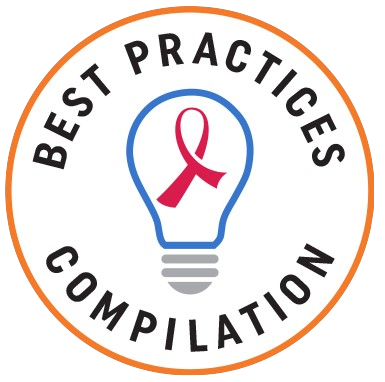The HIV Clinical Pharmacist Services intervention shortens the time between referral to and engagement in care by allowing newly referred clients to see pharmacists in addition to other clinical providers for their initial appointment. This intervention is supported by findings from a retrospective cohort study that took place from 2013 to 2017 at a Ryan White HIV/AIDS Program (RWHAP)-funded clinic. In addition to significantly decreasing the time between referral and initial visit, clients who saw a pharmacist also experienced shortened time to antiretroviral therapy (ART) initiation and viral suppression compared to those who only saw non-pharmacist providers.
Oklahoma City, OK
A lack of HIV clinicians presents an ongoing barrier to reaching the linkage to care, ART initiation, engagement in care, and viral suppression goals established in the National HIV/AIDS Strategy (NHAS). A 2010 HRSA-sponsored study examined HIV workforce availability and forecasted future care needs within the context of NHAS goals; the study’s findings revealed a growing decline in available providers and increasing time demands on existing providers1, a problem that has persisted over time.2,3 Provider shortages and higher demand for care could lead to delays in the time from diagnosis to linkage to care, ultimately delaying the time to ART initiation and viral suppression, which in turn increases the risk of disease progression and possible transmission.
The on-site pharmacists, whose time was supported through RWHAP funding, are already experienced in providing direct care to clients with HIV, and communicating with other HIV care providers in the clinic. A small number of new appointment slots were added to the pharmacists’ weekly schedule to allow them to see newly referred clients in addition to their pre-existing duties.
Four new appointment slots were made available each week as opportunities for newly referred clients to be seen by a pharmacist for their initial appointment instead of scheduling new clients only with non-pharmacist providers.
The evaluation showed significant decreases in days to scheduled appointments, time to ART initiation, and viral suppression.
| Category | Information |
|---|---|
| Evaluation data | Electronic medical record data |
| Measures |
|
| Results |
*statistically significant |
- Staffing. The RWHAP-funded clinic had three clinical pharmacists on site, eliminating the need to partner with external organizations to provide pharmacy service. The three clinical pharmacists were also HIV specialists who had practiced in the clinic for more than eight years. The other non-pharmacist, on-site providers included six part-time physicians and three nurse practitioners (two full-time, one part-time).
- Visit scheduling system. The clinic system requires the ability to add pharmacists to appointment slots. A limited number of additional appointment slots (four per week) were added to the schedule and offered to clients given the pharmacists’ pre-existing and unchanging duties.
- Billing. In the state of Oklahoma, pharmacists are not recognized as clinical providers, and secondary to institutional billing policy, pharmacists did not bill for services.
If a site does not already have them on staff, identifying HIV-specialist pharmacists who have the expertise and skills to conduct an initial visit with newly referred clients with HIV could be a challenge. If a clinic has an on-site pharmacy, consider providing basic intake training that includes and emphasizes cultural humility.
- While this study did not specifically examine reduction in care burden for non-pharmacist providers, participating nurse practitioners and physicians at the clinic expressed a decrease in burden.
- The evaluation team defined retention in care as a client returning for a second visit within six months following their initial visit and did not include the NHAS requirement that “labs must be separated by three months” given time constraints. Data indicated that “many” clients returned for care within six months but then fell out of care. A longer evaluation period might offer an opportunity for insight into true retention in care.
- Gilman B, Bouchery E, Hogan P, Negrusa S, Trent-Adams S, Cheever L. The HIV clinician workforce in the United States: Supply and demand projections from 2010 to 2015. HIV Specialist. 2016;8(3):3–9.
- Weiser J, Beer L, West BT, Duke CC, Gremel GW, Skarbinski J. Qualifications, Demographics, Satisfaction, and Future Capacity of the HIV Care Provider Workforce in the United States, 2013-2014. Clin Infect Dis. 2016 Oct 1;63(7):966-975.
- Bono RS, Dahman B, Sabik LM, et al. Human Immunodeficiency Virus-Experienced Clinician Workforce Capacity: Urban-Rural Disparities in the Southern United States. Clin Infect Dis. 2021;72(9):1615-1622. doi:10.1093/cid/ciaa300.

